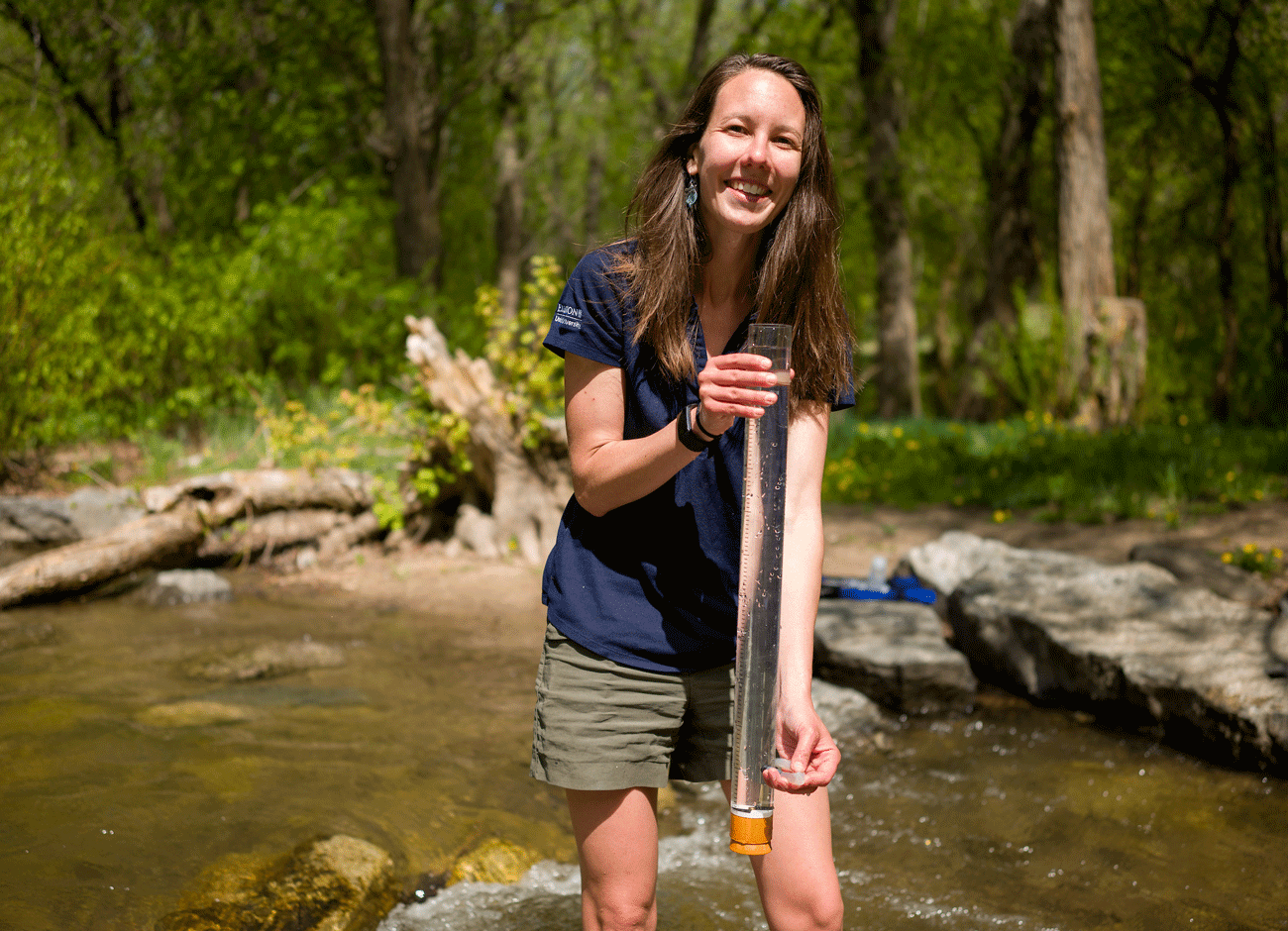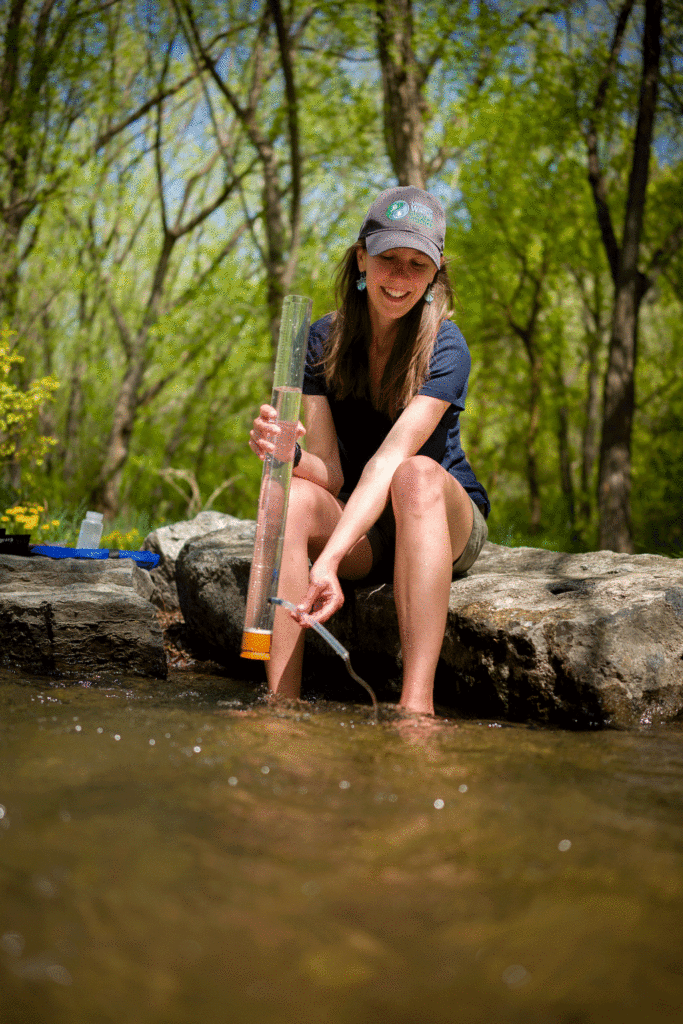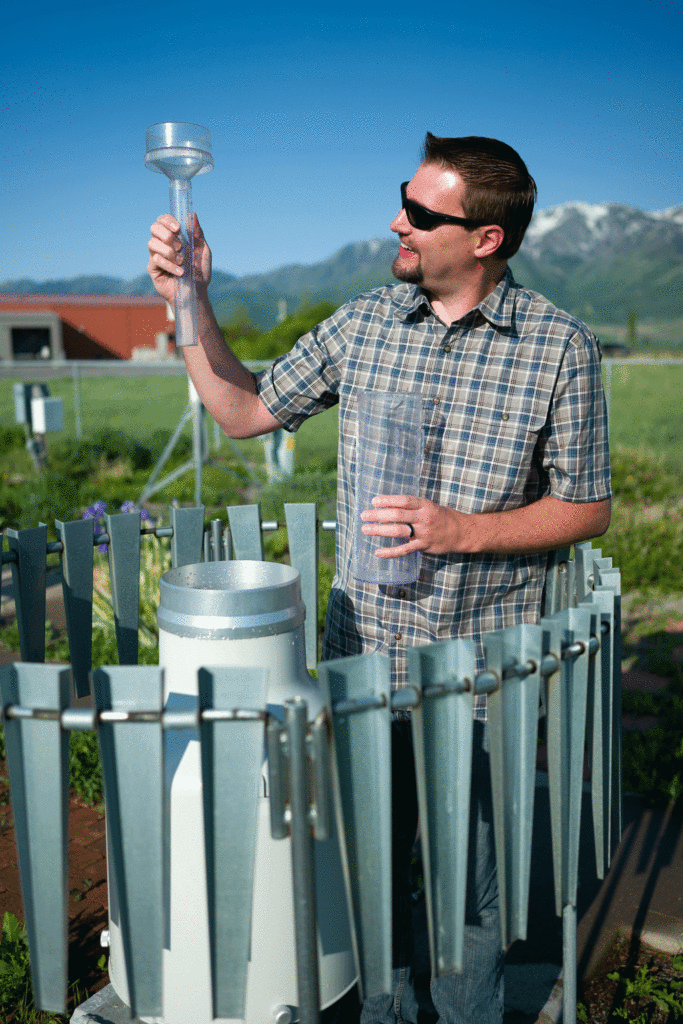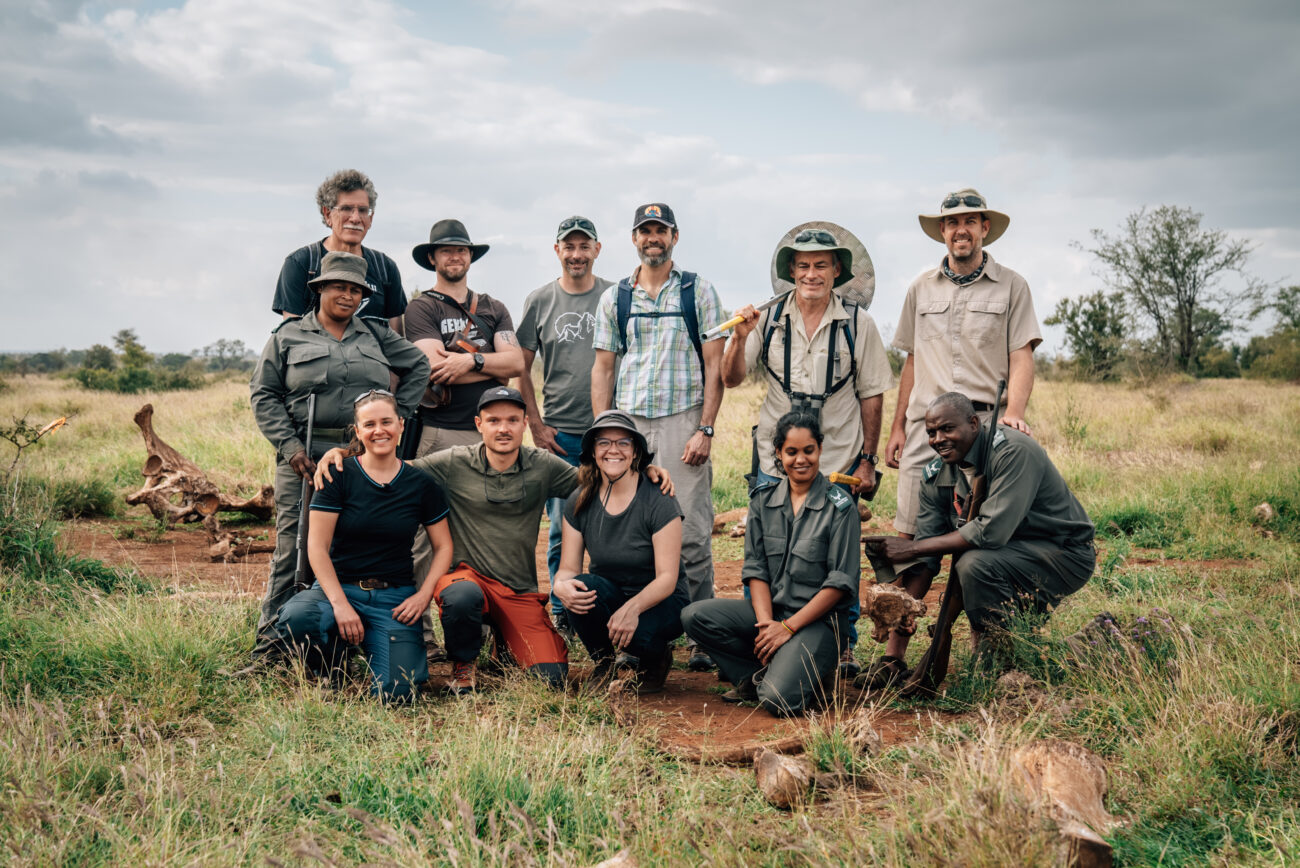Adding up the Zeros

Zero is not nothing. Zero rain is bad while zero E. coli is good.
If you record enough zeros they add up to a meaningful sum. It takes a whole village of citizen scientists nurturing numbers to do it.
There are hundreds of ways to become a citizen scientist. Browsing through websites such as CitSci.org, Zooniverse.org, or CitizenScientist.org you will be overwhelmed by the opportunities from finding extraterrestrial life to counting worms. But two of the more prominent programs at Utah State University are CoCoRaHS and Water Watch. Both have components of the West’s scarcest resource, water.
Though CoCoRaHS sounds like a testy breakfast cereal, it is an awkwardly constructed acronym for Community Collaborative Rain, Hail, and Snow Network. While CoCoRaHS’s main mission is to measure quantity of precipitation, Water Watch volunteers across the country measure the quality of that water.
The CoCoRaHS concept started in Fort Collins in 1997 after a highly localized thunderstorm dumped a foot of rainfall in 24 hours causing a flash flood that killed five people. Those lives potentially could have been saved if the weather service had a better picture of localized rainfall. You probably know from experience that the rain that fell at your house could be quite different than your neighbor three blocks away or at the airport far across town. A team of citizen scientists with backyard precipitation gauges, monitored daily, could solve this problem. Results logged into a database could quickly give climatologists a better predictive picture.

What CoCoRaHS does is increase the density of measurement to capture these localized events, Jon Meyer, Ph.D. ’17, climatologist in the department of Plants, Soils and Climate and face of CoCoRaHS in Utah explains. In research terms, the “n,” or sample size, increases making the results more accurate.
“The program is a conduit between measurements on the ground and emergency warning meteorologists,” Meyer says. “There is also a whole downstream pool of interested data such as insurance adjusters, water management agencies, engineers, and even mosquito abatement companies which need to know where more or less rain has fallen on a community level. There are more sophisticated weather stations, but they are further apart. These citizen scientists are filling in the gaps.”
We have some really dedicated observers who have been logging data for 13 or more years now totaling 5,000 observations for a single person, Meyer said. One of those is Ron Schroeder.
“I’ve always been interested in weather and actually have a master’s degree in climatology” Schroeder says. “Right out of college I spent a year working in the high Arctic but over the years drifted into the computer industry.”
He now lives in the Salt Lake valley and designs software for Android devices. When Schroeder says “high Arctic” he’s being modest. Specifically, it was at the highest north permanently inhabited place in the world; the Canadian Forces Station on Ellesmere Island.
“Volunteering with CoCoRaHS keeps me attached to what I studied,” Schroeder says. “I get up, walk out to the gauge and take a 7 am measurement almost every day. Most days it only takes a couple minutes because the measurement is zero. The snow days take more time because you have to carefully melt the snow and then pour it back into the rain gauge so you can report the amount of water, rather than the amount of snow.”
Usually by the afternoon you can see all the measurements represented by dots on the CoCoRaHS interactive map. Schroeder’s dot is in south Cottonwood Heights and it measured .03 inches of rain on the day we spoke.

The quality of that fallen water is constantly changing with temperature, precipitation, runoff, and human activity. Similar to precipitation gauges, monitoring lakes and streams can only give you a snapshot, but those snapshots can be woven into a meaningful collage of data. Water Watch, like CoCoRaHS, provides a larger “n.”
The citizen science program evolved from Lake Watch formed by Nancy Mesner in 2008, which measured only one variable, turbidity. Volunteers dropped a device called a “secchi disk” into lake water and measured how deep it went before you could no longer see it clearly. In 2012, with additional funding from the Utah Division of Water Quality, more measurements as well as more locations were added to the program.
We have 121 active volunteers, says program coordinator Hope Braithwaite. Most take along family, friends, or do it as a class project which brings the total participant number to 726. Water Watch citizen scientists commit to monthly measurements April through October. All data is uploaded to Utah State University in addition to CitSci.org where it is publicly available.
Braithwaite juggles being a coach, recruiter, and trainer for the constantly changing pool of volunteers. Some age out the program because they are no longer physically able to get out to the measurement sites. Others volunteer for a couple years to learn the science but then move onto other things.
Five-year volunteer Janet Hancock who got her degree in environmental photography started the doing measurements as a way to stay connected to science outside of her job as an administrative assistant. She monitors sites at Mantua, Porcupine, and Hyrum for the battery of tests Water Watch uses.
“It’s nice just to work outside and check the health of the water and look for changes over time,” Hancock says. “If I could do this as a career, I would but for now it’s a way to separate myself from my desk job. It gets we out in nature with the dogs.”
Speaking of dogs, she says she feels more confident that she can spot harmful algae blooms in time to keep her dog safe since she started volunteering for Water Watch.
Amy Hotchberg made Water Watch a family project. “I wanted to get my kids involved in an outdoor volunteer activity, she says. “Going out monthly to our monitoring location on Right Hand Fork was something we could do together. There was one day we were out and the water was cloudier from sediment. It appeared to be an impact that day from some ATVs upstream and it was interesting to see the impact they could have.”
Citizen science has been around since the beginning of time. The Christmas Bird Count is citizen science. There are myriad stories of citizens making scientific breakthroughs in their garage labs. Citizen science is flourishing now because we have tools to quickly connect people and aggregate data. Some call it crowdsourcing. Others just call it fun.





